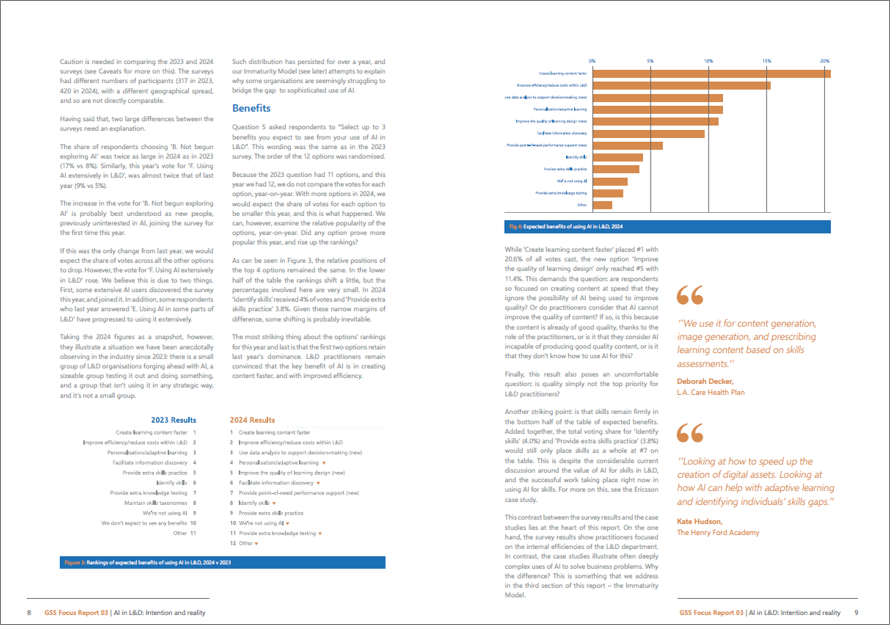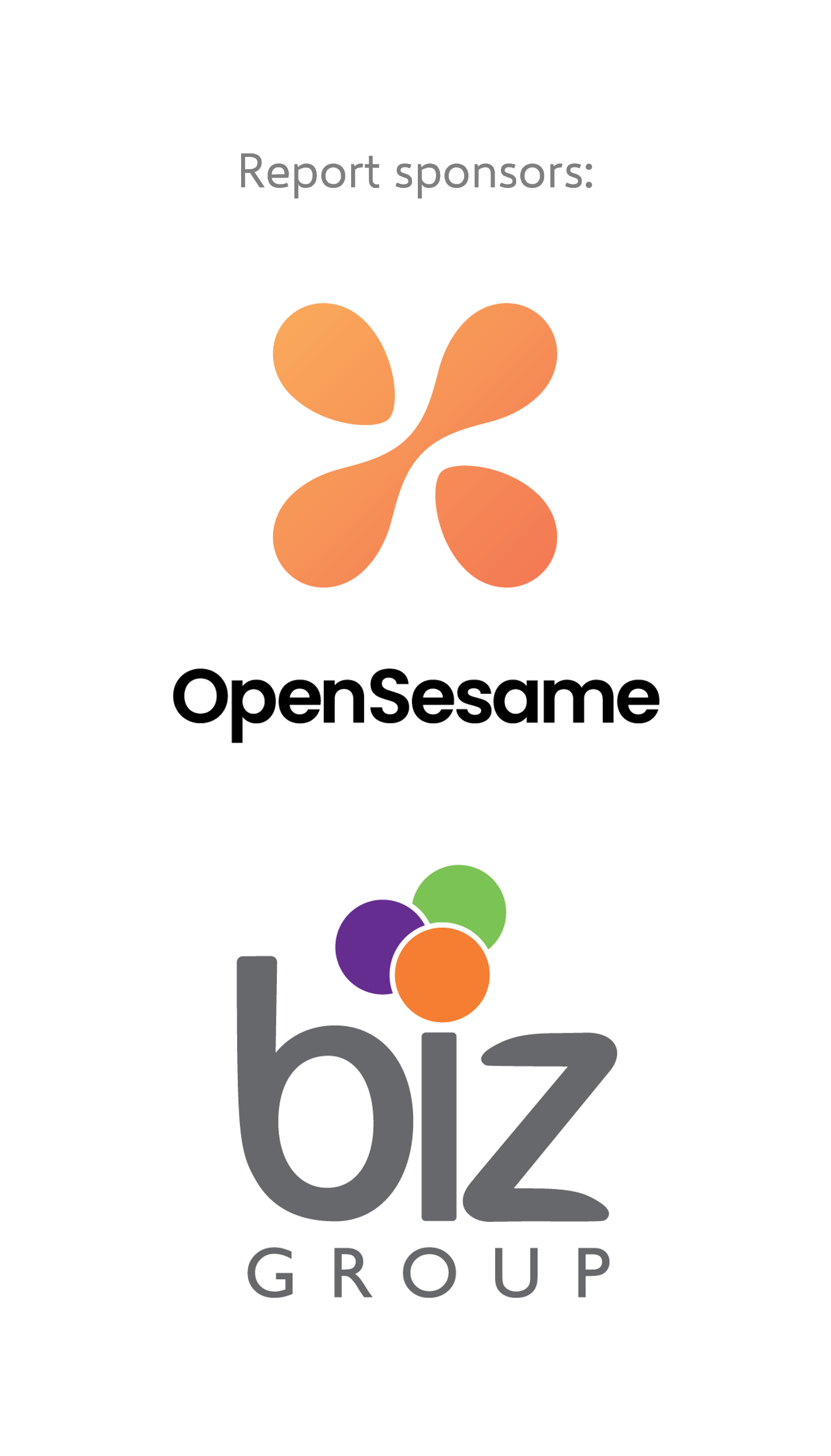AI in L&D: Intention and reality

We surveyed 420 L&D professionals from over 50 countries, explored how they are using AI today, and created six detailed case studies of sophisticated uses of AI.
Dwelling on this 48-page report, and its two predecessors, something was clear. Something that needed explanation.
We can find no evidence that there is an automatic movement from using L&D for efficiencies inside the department to sophisticated uses such as understanding organisational skills.
To explain why, we created a model. It suggests the characteristics of L&D departments and organisations most likely to succeed in using AI for L&D in a sophisticated way.
We call this model the Immaturity Model. It's on page 35 of the report. And it's a challenge to everyone in L&D.

From the report conclusions:
In this report, we have tried to answer a difficult question: Why is L&D using a powerful new technology largely to improve its internal processes rather than to increase its business impact?
Our answer is the Immaturity Model, which suggests that several factors keep L&D tied to its traditional role as the provider of courses for the organisation. To avoid this and to use AI in a more sophisticated way, the L&D department must be ‘Open’ – ready and able to innovate to support improved organisational performance. In addition, it needs to work in a place with both a mandate for innovation and a culture that supports it. Where these extend across the organisation, we see sophisticated implementations that integrate learning into the workings of the business. Where they are present locally, an Open L&D department can deploy local solutions to good effect, as some of our case studies show.
Our survey data suggests that many L&D departments are, however, largely using AI to create content and that when doing so, they are more concerned with speed than quality.
We believe there is a tacit assumption that AI is a single technology to be adopted with an associated maturity model. This suggests that using AI to create more content is the first step on a journey that ends inexorably with sophisticated implementations.
A maturity model like this is beguiling. It suggests that it is enough to start something and to pursue it with intent to reach one’s destination.
AI, however, is not a single technology but an umbrella term for a range of technologies, each with very different routes to successful adoption. Success in climbing one mountain of adoption (e.g., creating content) will be of little use in climbing the next (e.g., inferring skills). The Immaturity Model says that success is not purely a matter of striving with intent; it depends on both the L&D department and its parent organisation.
Since we started this research in the summer of 2023, we have written three reports based on surveys, countless interviews, and conversations with practitioners. At the start, we may have shared the common, unconscious assumption that there was some AI adoption maturity model to be found. However, unable to find any evidence to support such a model, we felt compelled to ask why.
We have presented the Immaturity Model dispassionately, but in writing this report, as we dwelt on the data and the case studies, we could not help but think that AI presents L&D with a once-in-a-generation opportunity to have the impact and reach that it has always wanted. When a similar opportunity was presented at the end of the 1990s, training (as it was then) could perhaps have broadened its scope using the power of the new World Wide Web. The response then was to create click-next elearning. If we fail to seize this opportunity, then the Model will be not a roadmap for growth but a description of how, faced with opportunity, L&D chose once more to remain with less influence, having less impact, in immaturity.



